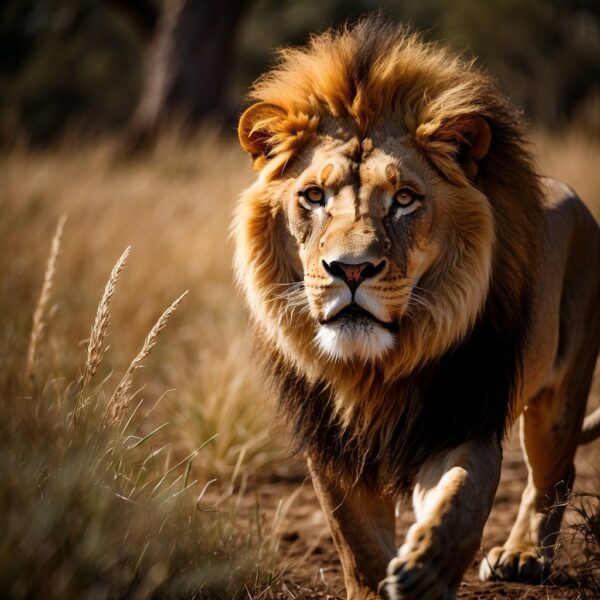
World Lion Day: Celebrating the King
World Lion Day, observed annually on August 10, is a significant date dedicated to the recognition and appreciation of one of the most iconic species of the animal kingdom—the lion. This global event serves to promote awareness regarding the cultural and biological importance of lions, and to underscore the conservation issues they face. Lions have long been revered across various cultures for their strength and majesty, but despite their celebrated status, these majestic animals are facing numerous threats that have led to a decline in their populations.
The day unites conservationists, wildlife enthusiasts, and organizations around the world in efforts to raise public knowledge about the challenges lions face, such as habitat loss, human-wildlife conflict, and illegal wildlife trade. By shining a light on these issues, World Lion Day aims to galvanize support for the preservation of this species. The survival of lions is critical not only for maintaining biodiversity but also for the well-being of the ecosystems where they play a key role as apex predators.
Key Takeaways
- World Lion Day is an international event on August 10 emphasizing the importance of lions and the conservation challenges they face.
- Conservation measures are crucial for the survival of lions, which are under threat from habitat loss and illegal hunting.
- Public awareness and support play a vital role in the global efforts to ensure a future for lions in the wild.
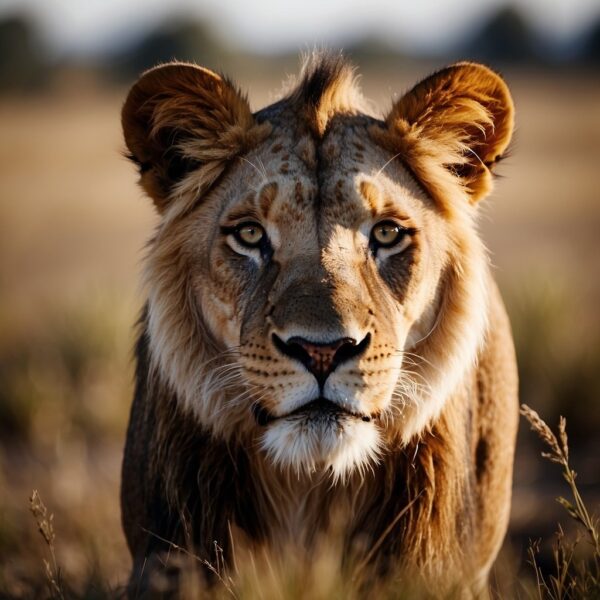
History and Significance of World Lion Day
World Lion Day is commemorated as a symbol of the cultural and biological importance of lions worldwide. This day underscores the urgency of lion conservation efforts and highlights the challenges that these magnificent creatures face.
Origins of World Lion Day
World Lion Day was officially observed for the first time on August 10, 2013. Conceived and promoted by Dereck and Beverly Joubert, the day was established to raise awareness about lions and the conservation issues they are facing. The Jouberts are renowned wildlife conservationists and filmmakers who recognized the need for a specific day to celebrate the cultural icon that lions represent and to mobilize support for their dwindling populations.
Impact on Lion Conservation
The advent of World Lion Day has had a significant impact on lion conservation efforts. The day serves to:
- Educate the public about the decline of lion populations due to issues such as habitat loss, human-wildlife conflict, and poaching.
- Encourage conservation actions including fundraising campaigns to support protection measures.
By highlighting the precarious state of lion populations, World Lion Day has galvanized conservationists and the general public to engage in activities that protect and restore lion habitats and numbers.
Global Reach and Recognition
World Lion Day has quickly gained global reach and recognition. Governments, wildlife conservation organizations, and individuals across continents observe this day through:
- Media Coverage: Spreading information and knowledge about lion conservation.
- Events: Hosting educational events and discussions to further the cause of lion preservation.
The unified efforts on World Lion Day underscore the importance of lions to ecosystems and to cultural heritages, firmly positioning the plight of lions on the international conservation agenda.
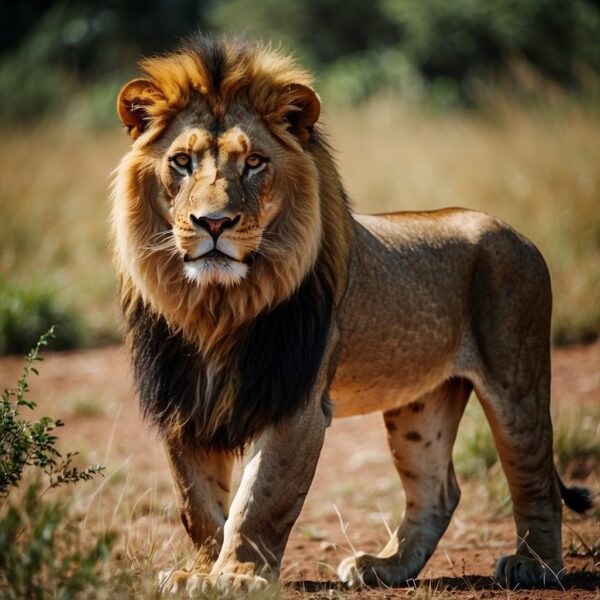
Challenges Facing Lions
Lions, iconic symbols of strength and courage, are facing a series of severe challenges that threaten their populations across Africa and Asia. These threats range from habitat encroachment and poaching to conflicts with humans, all of which have led to a significant decline in their numbers.
Habitat Loss and Fragmentation
Lions once roamed vast areas of Africa and Asia, but their range has significantly diminished. Habitat loss due to expanding human settlements, agriculture, and infrastructure projects has fragmented the landscapes that lions depend on, restricting their movement and leading to smaller, isolated populations. Conservation efforts are crucial to mitigate this, yet the struggle to balance human development with habitat preservation continues.
Human-Lion Conflicts
Interactions between humans and lions often lead to retaliatory killings of lions, stemming from the lions preying on livestock. Subsequently, communities resort to eliminating lions to protect their livelihoods. Additionally, trophy hunting can contribute to the decline of lion populations, despite arguments that it generates funds for conservation. The delicate balance between human-wildlife conflict and coexistence is a key to ensuring lion survival.
Poaching and Illegal Wildlife Trade
Illicit activities like poaching and the sale of lion parts in traditional medicine fuel a black market that puts lions at risk. Despite international regulations, lion bones and other body parts are still in demand in certain cultures, driving illegal killings and trade. Robust enforcement of anti-poaching laws and international cooperation are imperative for curbing this threat.
Prey Species Decline
The availability of natural prey is essential for lion survival. Overhunting and habitat changes have caused a decline in prey species, forcing lions to come into closer contact with humans as they search for food, which can exacerbate human-lion conflicts. Ensuring balanced ecosystems and adequate prey populations is necessary for both the lions’ welfare and the integrity of their natural habitats.
Consistent and efficient conservation strategies are required to address these challenges and to pull lions back from the edge of further decline and potential extinction. Protecting the “King of the Beasts” is not just about saving a single species, but also about preserving the health and diversity of entire ecosystems where they are apex predators.
Conservation Efforts
World Lion Day brings the plight and conservation of lions to the forefront, emphasizing the crux of legal frameworks, programmatic interventions, and the vital role of community engagement in safeguarding the future of these majestic big cats.
Legal Protections and Policies
To curb the decline in lion populations, various countries have implemented legal protections. For example, it’s noteworthy that lion hunting quotas have been regulated, and some regions have an embargo on lion hunting trophies. The International Union for Conservation of Nature (IUCN), instrumental in setting conservation statuses, lists lions as ‘Vulnerable’ and provides guidance for their protection.
Conservation Programs and Initiatives
Initiatives such as the Big Cat Initiative have been launched to support on-the-ground conservation efforts. These programs work directly within national parks and protected areas to strengthen the natural environment and maintain ecological balance. These initiatives often focus on mitigating human-wildlife conflict and advancing conservation research.
- Key Conservation Programs:
- Big Cat Initiative
- Protection of habitat within National Parks
- Anti-poaching operations
Community Involvement and Education
Educational programs play a crucial role in lion conservation, fostering local community support and increasing global awareness. Entities like the Big Cats Initiative emphasize the importance of educating local communities on coexistence strategies and the benefits of conservation efforts to ensure both human and lion populations can thrive.
- Community Education Strategies:
- Safety measures for human activities
- Benefits of ecological balance and wildlife to local well-being
- Climate change impact awareness
By involving local communities and imparting education, conservation efforts become more sustainable, ultimately helping to secure the future of lions in their natural habitats.
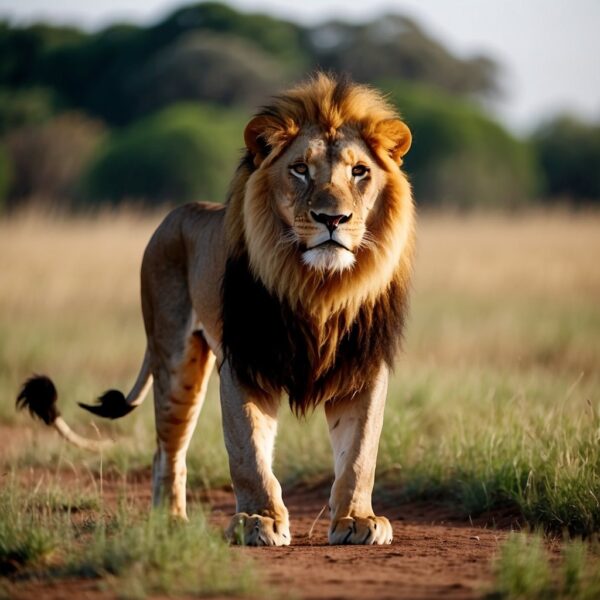
How to Support Lion Conservation
Supporting lion conservation requires a multifaceted approach encompassing grassroots participation, financial support, and hands-on activism. By engaging in World Lion Day, contributing through donations and fundraising, or dedicating time to volunteer efforts and activism, individuals can make a substantial impact on the protection and preservation of these majestic creatures.
Participating in World Lion Day
World Lion Day, observed annually on August 10th, offers a platform to raise awareness about the plight of lions and the importance of conservation efforts. Individuals can support by:
- Sharing informational content and conservation messages on social media to increase global awareness.
- Organizing or attending local events that celebrate lions and educate the community on lion conservation.
Donations and Fundraising
Financial contributions play a crucial role in lion conservation. Here’s how donations can make a difference:
- Donating to reputable organizations such as National Geographic’s Big Cats Initiative which is dedicated to halting the decline of big cats in the wild.
- Launching fundraising campaigns to solicit contributions from a broader audience to support conservation projects.
| Ways to Donate | Description |
|---|---|
| One-time Donation | A direct contribution which can be allocated to specific projects for lion conservation. |
| Monthly Donations | Providing steady support that allows organizations to plan long-term strategies. |
| Fundraising | Personal or group initiatives that pool resources to support large-scale conservation programs. |
Volunteering and Activism
Volunteerism offers valuable on-the-ground support to conservation projects:
- Volunteering with conservation organizations enables individuals to contribute directly to lion research and protection activities.
- Engaging in activism by advocating for policies that protect lion habitats and address human-wildlife conflicts.
The Future for Lions
Addressing the trajectory of lion populations confronts a narrative of conservation beset with challenges and a concerted global effort to ensure the majesty of lions persists for future generations.
Current Trends and Population Statistics
Lion populations have been subject to substantial decline over the past century, with various estimates noting that there may be as few as 20,000 lions left in the wild. Historically, these creatures roamed across most of Africa and parts of Asia and Europe, but they are now predominantly found in sub-Saharan Africa, with a severely reduced and fragmented population in India.
- IUCN Red List Status: Vulnerable
- Subpopulations at Higher Risk: Asiatic (Panthera leo leo), West African (Panthera leo senegalensis)
Recent figures from the International Union for Conservation of Nature (IUCN) Red List indicate the species is listed as Vulnerable, with specific subpopulations, like the Asiatic lion and the West African lion, classified as Endangered.
Predictions and Goals for Lion Populations
Conservationists and researchers are investing in multifaceted strategies to arrest the decline of lion populations. Future predictions hinge upon the success of these efforts, focusing on habitat preservation, human-wildlife conflict mitigation, and clamping down on the illegal wildlife trade.
Goals set by the Global Lion Recovery Plan include:
- Doubling the number of lions by 2050
- Expansion and management of protected areas
- Enhancing community incentives for conservation
Crucially, the success of these objectives relies also on the political will and the financial support from international communities, as well as the effective implementation of policies like those debated within the Convention on International Trade in Endangered Species (CITES).
Experts foster cautious optimism, acknowledging positive trends where conservation measures have been effectively implemented, although emphasizing that extensive efforts must continue to secure a sustainable future for lion populations.
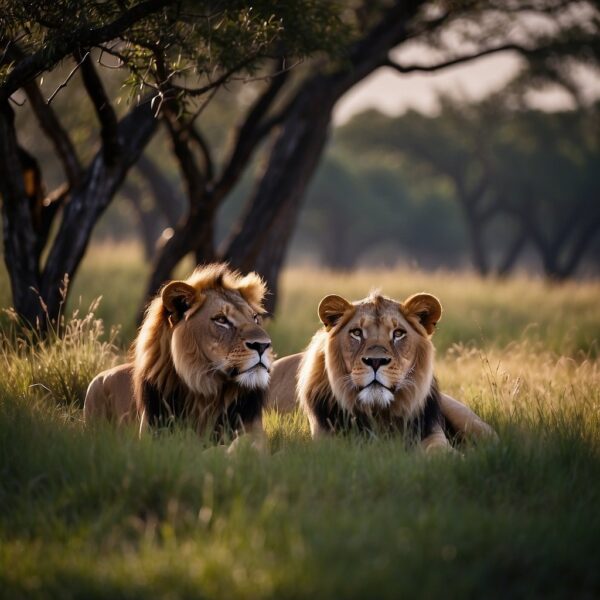
Frequently Asked Questions
This section responds to common inquiries regarding World Lion Day, furnishing readers with insights into the celebration’s activities, goals, conservation impact, and unique attributes.
What are some common ways to participate in World Lion Day events?
Individuals can partake in World Lion Day by attending educational seminars, supporting conservation fundraises, visiting zoos that host special events, and engaging in social media campaigns to raise awareness about lion conservation.
What are the main goals of celebrating World Lion Day?
The primary objectives of World Lion Day are to raise awareness about the plight of lion populations, promote conservation efforts to ensure their survival, and celebrate the cultural significance of lions globally.
How does World Lion Day contribute to the conservation of lions?
World Lion Day fosters international collaboration, increases awareness, and generates funding for research and conservation projects aimed at protecting lion habitats and preventing human-lion conflict.
Can you share some interesting facts about lions on World Lion Day?
Lions are the only cats that live in groups called prides and have a distinctive mane that can vary in color and size. An adult male’s roar can be heard up to 8 kilometers away.
How has the theme for World Lion Day changed over the years?
Themes for World Lion Day have evolved to reflect current conservation challenges and successes, often focusing on specific issues such as habitat loss, human-animal conflict, or the importance of community engagement in lion protection.
What are the differences between World Lion Day and other wildlife days, such as World Elephant Day?
While World Lion Day is dedicated to the conservation and appreciation of lions specifically, World Elephant Day focuses on the preservation of elephants. Both days aim to educate the public and promote measures to conserve these keystone species, but they address different threats and champion different species’ roles in their respective ecosystems.